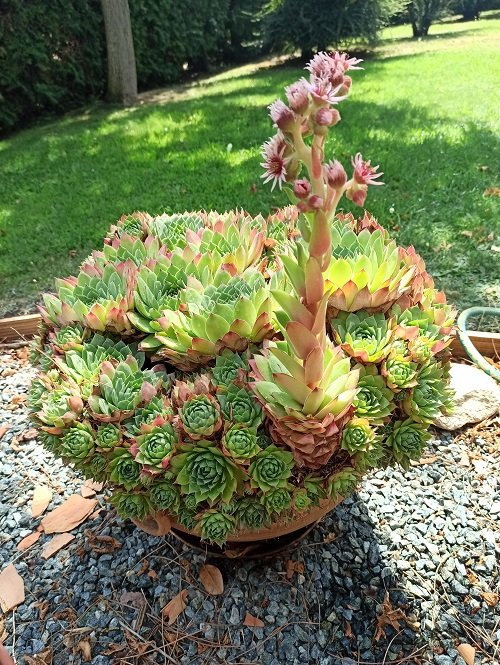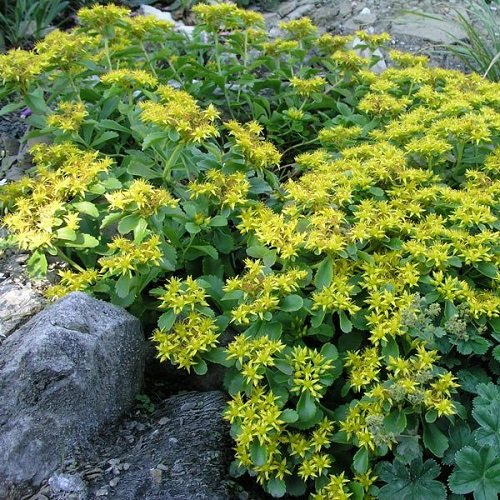Korean native succulents are well adapted to grow in specific geographical conditions, but you, too, can grow them anywhere!
What sets Korean succulents apart are their stunning blooms and versatile nature to thrive in any environment, making them perfect for anyone looking for a plant that’s easy to look after.
Don’t miss these Big Leaf Succulents
Korean Succulents
These succulents are well-suited to the Korean climate, meaning, they do well in both rocky terrain and urban settings.
1. Stringy Stonecrop

Botanical Name: Sedum sarmentosum
The elongated leaves of this plant have a bright green hue – they spread rapidly, making them an apt choice as ground covers. You can also plant them in hanging baskets for the best show of their star-shaped yellow flowers in early summer.
Fun Fact: This plant is used in Korean cuisine and is known for its slightly sour and crunchy texture. It’s often used in salads, side dishes, and as a seasoning ingredient.
2. Korean Stonecrop

This one remains compact and has a rosette-forming habit. Expose it to plenty of sunlight and it will reward you with clusters of bright yellow flowers!
3. Green Dunce Cap
Botanical Name: Orostachys malacophylla
The fleshy foliage of this one has a pale green hue – like the others, it prefers full sun and is also quite adaptable to drought-like conditions. Come late summer or early fall, and it will bloom bell shaped flowers.
4. Rock Pine

Botanical Name: Orostachys japonica
The dense mat of cone shape rosettes of its leaves are a sight to behold, thanks to its blue-green hue that takes a red-orange hue in full sun exposure! It grows best in sandy soil.
5. Boehmeri

Botanical Name: Orostachys boehmeri
The light gray-green leaves of the plant forms bunch of rosettes, which is great to add textures in the garden. The best part – it will do well in partial shade, too! It grows white to pale pink flowers, adding a subtle color contrast.
6. Chinese Dunce Cap

Botanical Name: Orostachys iwarenge
The leaves of this succulent have a distinctive gray-green hue that takes a purple sheen when exposed to plenty of sunlight. It produces white flowers in late summer or early fall.
7. Garden Stonecrop

Botanical Name: Hylotelephium erythrostictum
It has thick and fleshy leaves that form a bushy clump – for best growth, expose it to plenty of sunlight and see it bloom pink flowers in late summer to fall that also attract butterflies and bees.
8. Russian Stonecrop
Botanical Name: Sedum kamtschaticum
Though the name might make you think otherwise, but it is quite a common sight in Korea! This hardy plant has oval leaves that grow best in drought and coastal conditions. It also grows bright yellow, star-shaped flowers in early to mid-summer.
9. Amur Stonecrop
Botanical Name: Sedum selskianum
Its light green foliage has lace-like appearance and a spreading growth pattern. The plant is not fussy and can thrive in any growing condition. The most attract feature – dense clusters of yellow flowers that appear typically in summer!
10. Common Houseleek

Botanical Name: Sempervivum tectorum
Yes! This one’s a Korean native, too! It sports symmetrical rosettes of succulent leaves having red tips. Houseleek is one of the most hardy succulents you can grow!





